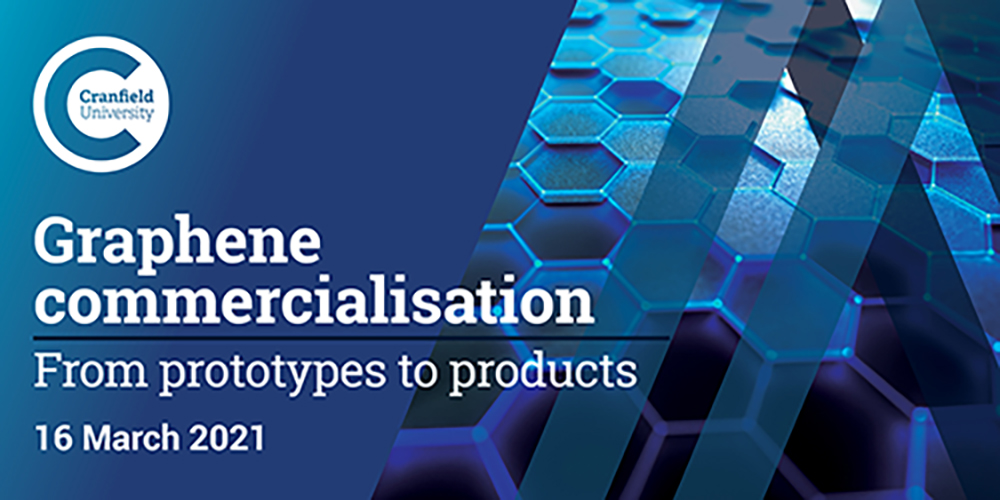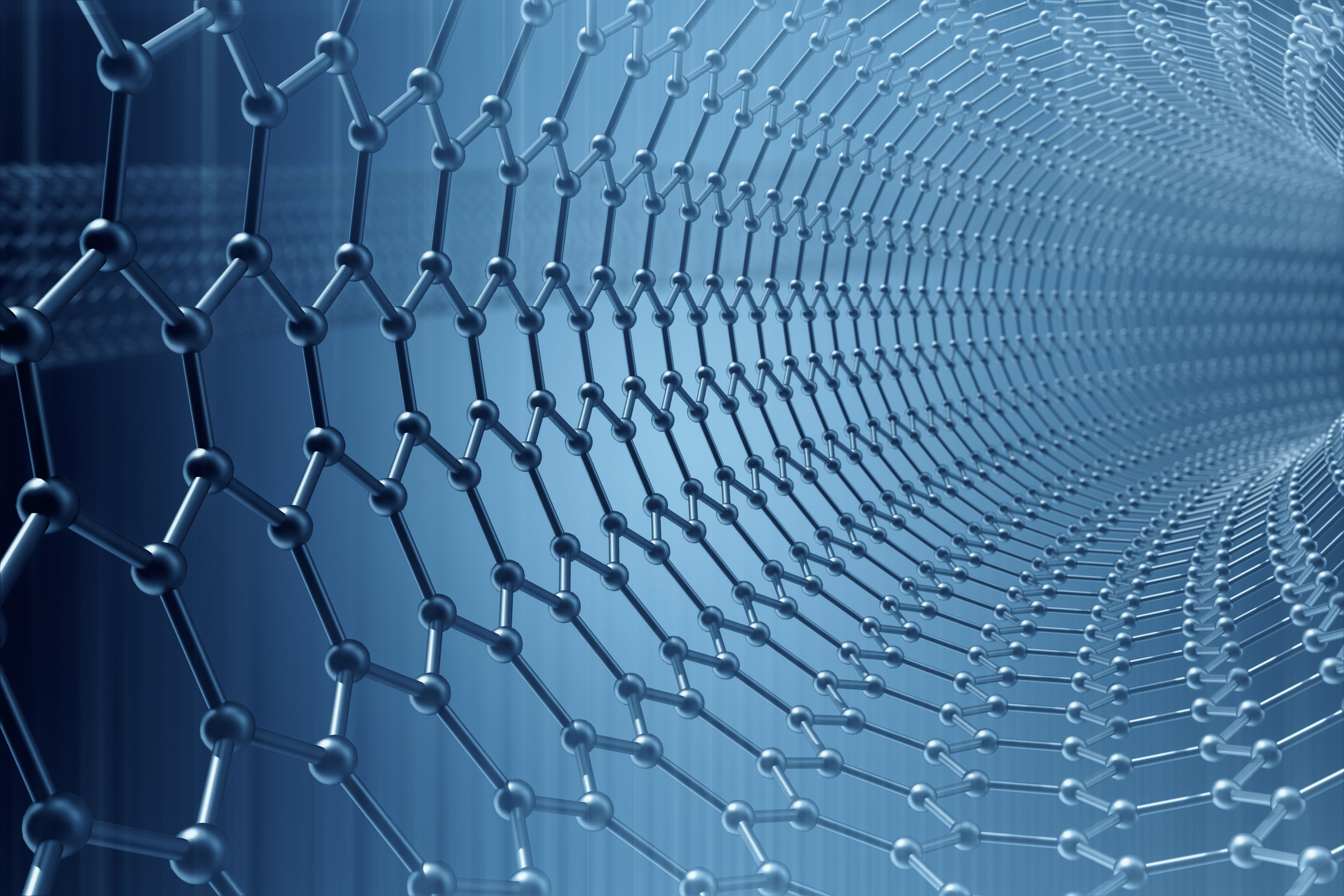The power of graphene – from prototypes to products
10/03/2021

In November 2020, the UK Government added graphene to its list of highly strategic materials, signalling this advanced two-dimensional material as a top priority for the UK manufacturing industry.
One million times thinner than a human hair, and 200 times stronger than steel, this manmade material has extraordinary properties. Versatile and conductive, it is disrupting industries from consumer electronics to aerospace. In Cranfield University’s Composite Centre right now, graphene is being used in everything from aircraft structures, oil, paint, helmets, hydrogen pipes and very timely, in sustainable gloves and face masks, to support the fight with Covid-19.
The excitement surrounding graphene soared after Sir Andre Geim and Sir Kostya Novoselov were awarded the 2010 Nobel Prize in Physics, “for ground-breaking experiments regarding the two-dimensional material graphene”. Geim, Novoselov and their collaborators from the University of Manchester extracted graphene from graphite, using the “scotch tape” or exfoliation method, to obtain a piece of graphene one atom thick.
In recent years, Cambridge Nanosystems has developed another route to create graphene. While the Nobel Prize winning team used a top-down method, extracting graphene from the raw material, graphite, Cambridge Nanosystems flips this on its head – starting from molecules and making graphene from bottom-up. This unique patented process takes methane, breaking the gas into carbon and hydrogen species to create graphene. Founded by Cranfield’s Dr Krzysztof Koziol in 2012, the company has developed a process to produce graphene at ultra-high quality and on a larger scale than has ever been possible before.
With phenomenal applications, this process also creates wonderful environmental opportunities. By processing waste material, those nasty greenhouse gasses (methane), to produce graphene, there is also a by-product, hydrogen. Absorbing and filtering the carbon in methane and delivering hydrogen as an output means that this production capability is not simply net zero, it is better than net zero – and even greener than hydrogen electrolysers.
Cranfield’s Graphene commercialisation conference, the third of its kind (having been held previously in 2017 and 2018) has been designed to bring the whole industry together, to showcase the remarkable properties and applications of graphene, especially those at an advanced level of commercial development, with prototypes tested and products nearly or already available on the market.

Krzysztof explains, “Back in 2010, Graphene was championed as miracle, even magic, material. Yet it is, put simply, an engineering material. Sometimes it will work and solve major challenges, however it needs to be designed into a specific purpose – and together, academics and industry can deliver on this.”
“Since 2006, the UK Government has spent £150million on research and development in graphene. In Europe, a ten-year project (ending in 2023) named Graphene Flagship has invested €1 billion. It is time to commercialise graphene, to enable product development – and this conference is the industry’s opportunity to make this a reality.”
In product development terms, graphene is taking composite materials to another level – particularly in its thermal performance and mechanical stability. The team at Cranfield is currently working on live projects that have commercial application at its core:
Underfloor heating
Imagine life without bulky radiators or storage heaters. While it can be difficult and messy to retrofit underfloor heating in homes, graphene paint can be used as a sprayable heater through which a current can be passed. Hot within seconds and with lower energy consumption, we are no longer reliant on currents passing through single wires.
PPE: Gloves & face masks
The product of the moment, graphene lattices are being applied to face masks, creating a dense array of nanoscale blades. Microbes, such as viruses and bacteria, are around 1,000 times larger than the graphene molecules, with the graphene acting like a blade, cutting the microbes and killing them. A game changer in the fight against Covid-19, these masks and gloves are enabling not only antiviral/antibacterial capabilities but also sustainable future to combat PPE waste.
Aircraft composite work
The strength of graphene is facilitating the structural enhancement enough to withstand massive turbulence on aircrafts, as well as reducing the weight of the aircraft, improving their efficiency. Research is also seeking to improve the resin that holds together the carbon fibre, as well as enhancing copper wiring and heating coils, which would prevent the build-up of heavy ice. In time, graphene could one day replace the carbon fibre in the wings completely.
It is no wonder therefore that the UK Government has made graphene production a top priority. With live examples of its strengths and applications, innovation and investment will only continue to grow. Graphene commercialisation using methane is set to take centre stage globally – with this method of production comes carbon credits and a way forward to create truly green hydrogen. As such the team at Cambridge Nanosystems, together with Cranfield University, are seeking to present their revolutionary innovations at global climate change conference, COP26, in November 2021.
Join the debate and see the future for yourself by attending this free virtual event on Tuesday 16 March. Click here to register now.
Categories & Tags:
Leave a comment on this post:
You might also like…
Preparing your work for Turnitin submission
Before submitting your work into Turnitin for similarity checking, if you have used referencing software then you may need to take some important steps first. Mendeley and Zotero integrate with MS Word by embedding field ...
The fast track to supercar engineering: My Cranfield journey
It’s been a dream come true to work on some of the world’s most prestigious supercars – the Aston Martin Valhalla, McLaren 750 & Artura, the GMA T.33. But every successful ...
Automotive Engineering: From student to hypercar innovation at Rimac
We sat down with recent graduate Thomas Perrin, to discuss how his year on the MSc in Automotive Engineering at Cranfield University propelled him from the lecture hall directly into the ...
What this year at Cranfield really meant to me
Every Cranfield journey is unique. In this alumni reflection, Zachea Scicluna shares what her year at Cranfield truly meant, from facing uncertainty to gaining hands-on experience in industry-backed projects. I’ve been reflecting (and delaying) ...
Preparing for assignments and exams?
Sorry! We know it seems a bit mean to mention the exams in January rather than looking forward to the break before it! However, we know many of you will be thinking about your forthcoming ...
Screening for FTSE 100 companies on Bloomberg
So you’re researching an index and need some data on its constituent companies? Bloomberg’s Equity Screening tool makes light work of this, not just for the FTSE, but for indices, exchanges and sectors worldwide. Type EQS ...






